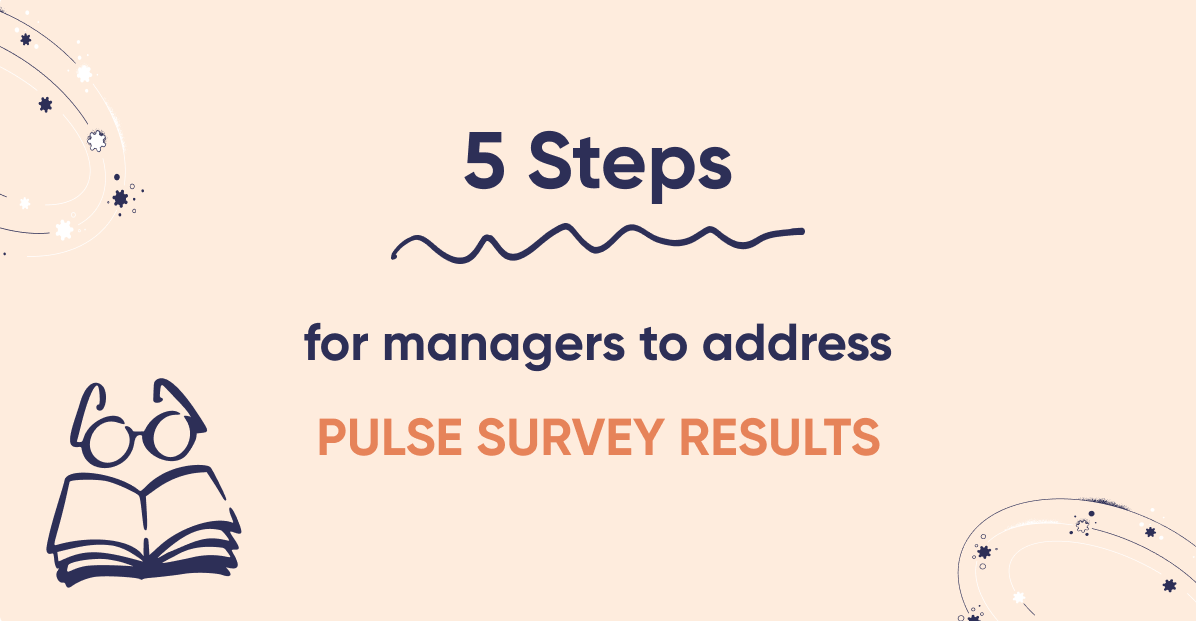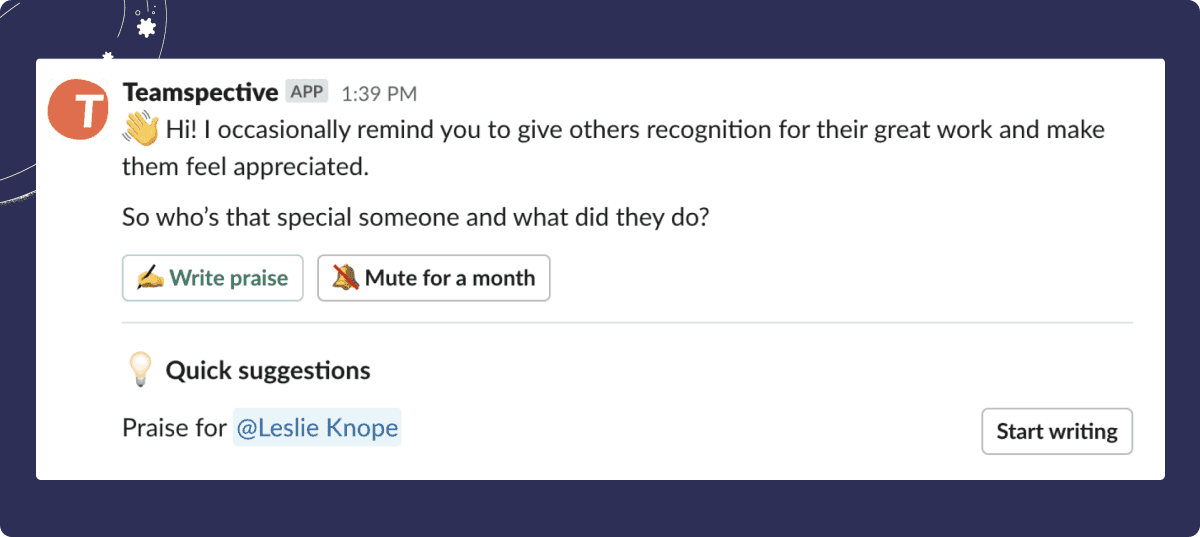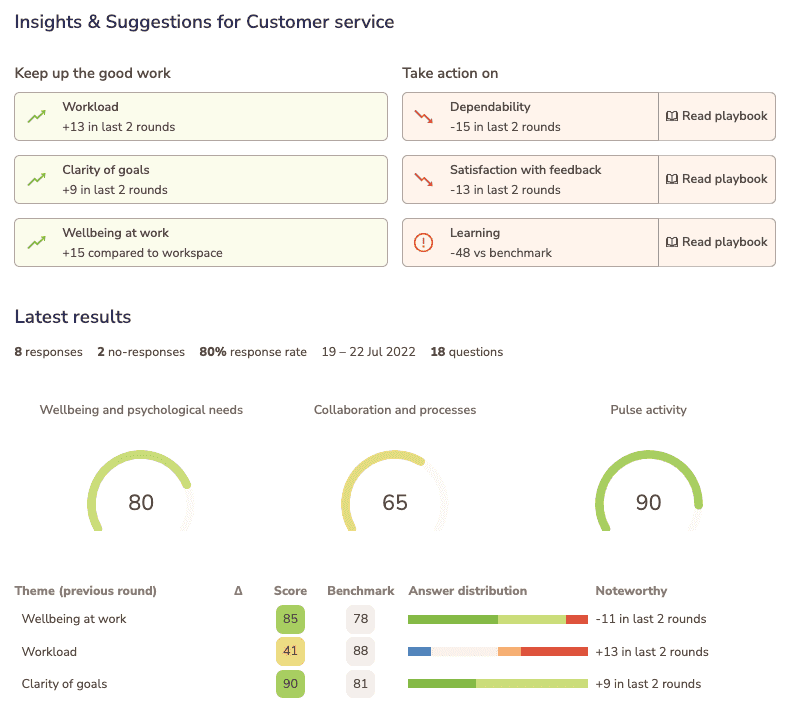It’s tempting to think that having pulse surveys in place is enough to improve team wellbeing and collaboration. However, it is even more important to create a routine of taking action and monitoring progress on the collected results. Here’s how.
The five steps to use Teamspective pulse surveys smartly
By applying these proven practices, you'll notice dramatic improvements in team’s engagement, wellbeing and collaboration almost immediately, usually within 2-4 weeks.
1. Measure objectively
You should never rely on simply “reading the room" or even on having 1-1 discussions because you’ll never know what people are afraid to share with you. It’s better to complement those observations with anonymous feedback as this will often be more honest and candid.
Teamspective pulse surveys are anonymous and cover the most important factors impacting team effectiveness such as: dependability, communication, clarity of goals and psychological safety. We have explored and combined the best of the latest research in order to help you measure the right things. So don’t forget to collect data and analyse results regularly.
2. Show appreciation for everyone’s inputs
When you receive new inputs and results from the survey, be sure to thank all team members for sharing their views. The best time for that would be at your team meetings or any other time by sending praise via the Teamspective tool. The ‘Praise’ feature is integrated into Slack, so thanking your team would take just a few seconds!
This practice makes the whole pulse activity more meaningful, especially at times when you may not be able to discuss the results with everyone immediately.
3. Address the results
When you have the time, be sure to address the results and provide feedback. This can be quick with the help of Teamspective’s Pulse Overview: just point out the top scores, changes, or other observations.
We recommend organising time for a more detailed discussion on a monthly basis. If your team has gone through this process before, then you can assign another team member to handle this meeting to support employee engagement, accountability and learning.
Also, note that Teamspective can automatically recommend the top 3 strongest and attention-requiring themes. To facilitate productive discussions of those, remember to leverage the “pulse playbooks” offered by Teamspective that contain relevant tips and tools.
The top development areas in each team should always be addressed by agreeing what concrete things need to be improved, and then assigning responsibility for action. The pulse playbooks contain detailed workshop templates and instructions for each potential development area.
4. Follow up on progress
Follow-up is perhaps the most important step in any effort to improve team wellbeing and collaboration. Once you’ve all agreed on action points, also agree about when you will check back on the progress.
Generally, it’s a good practice to follow up on actions already after 1-2 weeks. Seeing the impact on pulse results may take longer; monitoring it for example once a month is a good starting point, and only takes a few seconds from people to respond.
5. Give recognition for efforts and improvements
Over time, you will notice improvements occurring, so be sure to thank your team and appreciate everyone's efforts in making this happen. You may want to arrange some sort of reward, even if it's just a cake or a team lunch.
And remember that Teamspective feedback and praise features can help give positive reinforcement. The Praise feature can easily be found in the Teamspective Slack App and you can choose as many people as you want to show your appreciation. If you want to share a more structured message, then sending it using the Feedback feature in the Teamspective Web App would be a better option.
Summary
You’ll be able to improve your team’s wellbeing and collaboration by checking and addressing the pulse results regularly, and using Teamspective’s Pulse Overview and Pulse Playbooks to address development areas within your team.
Finally, you can measure your team’s progress in the next pulse surveys. Once you get used to this routine, identifying what needs to be discussed and improved only takes some minutes each month. And it’s going to make you a better, more knowledgeable and accurate leader.



